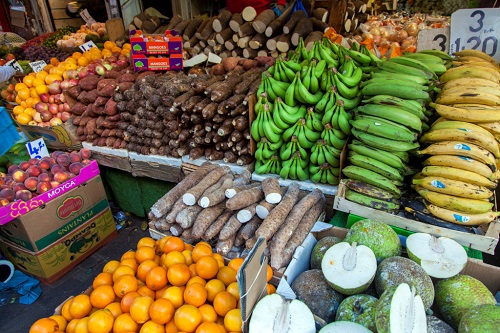The Food and Agriculture Organization of the United Nations (FAO) today launched its 2024 Statistical Yearbook, offering an in-depth overview of the most significant trends shaping global agrifood systems. This year’s edition highlights critical challenges, including increased temperatures over land, the ongoing global struggle with food insecurity alongside increasing obesity rates, and the environmental pressures faced by agricultural production.
Drawing on a wealth of data collected by FAO statisticians, the publication synthesizes the key factors influencing global agrifood systems. The 2024 edition is structured into four thematic chapters covering: the economic dimensions of agriculture; the production, trade, and prices of commodities; food security and nutrition; and sustainability and environmental aspects of agriculture.
“Timely, accurate and high-quality data and statistics are the cornerstone of solid policy design,” said José Rosero Moncayo, FAO Chief Statistician and Director of the Statistics Division. “This edition of the FAO Statistical Yearbook presents newly released country-level estimates on employment in agrifood systems as a sign of the transition of FAO statistics to consistently inform about the state of agrifood systems in the world. It also features a new dataset on dietary-related data, which is an important achievement to understand what people eat and how this affects nutritional outcomes.”
Key highlights:
• Global agricultural value has increased by 89 percent in real terms over the past two decades, reaching $3.8 trillion in 2022. Despite this growth, agriculture’s contribution to global economic output has remained relatively stable, and the proportion of the global workforce employed in agriculture has decreased, from 40 percent in 2000 to 26 percent in 2022.
• Food production has continued to rise, but hunger remains a persistent issue. In 2023, between 713 and 757 million people were undernourished. Considering the mid-range (733 million), this is about 152 million more people than in 2019. The majority of the undernourished people lives in Asia, even though the prevalence of undernourishment is highest in Africa.
• Obesity rates are also rising, particularly in high-income regions. Over 25 percent of adults in the Americas, Europe and Oceania are obese, reflecting the global challenge of ensuring access to healthy, nutritious food.
• The global production of primary crops reached 9.6 billion tonnes in 2022, an increase of 56 percent compared to 2000Staple crops such as sugar cane, maize, wheat and rice together account for nearly half of global crop production.
• Meat production increased by 55 percent from 2000 to 2022, with chicken accounting for the largest share of this rise. In 2022, 361 million tonnes of meat were produced globally, with chicken surpassing pork as the most produced meat.
• The use of pesticides increased by 70 percent between 2000 and 2022, with the Americas accounting for half of the global pesticide use in 2022.
• Inorganic fertilizers used in agriculture reached 185 million tonnes of nutrients in 2022, with 58 percent of this amount being nitrogen. This represents an increase of 37 percent compared with 2000.
• The production of vegetable oils grew by 133 percent between 2000 and 2021, largely driven by an increase in palm oil production.
• Greenhouse gas emissions from agrifood systems have risen by 10 percent between 2000 and 2022. Farm-gate emissions increased by 15 percent over the same period, with livestock contributing to around 54 percent of these emissions.
• Water scarcity remains a growing concern in regions such as the Near East and North Africa, where many countries face extreme water stress, impacting the sustainability of agricultural production. Kuwait, the United Arab Emirates and Saudi Arabia are withdrawing each year 9 to almost 40 times their renewable freshwater resources available.
The 2024 Statistical Yearbook is also available in a digital, interactive format and comes with a companion pocketbook, offering a clear reference to key data on agriculture, food security, and sustainability. It is part of FAO’s ongoing effort to improve data accessibility, complementing the FAOSTAT platform, which hosts the world’s largest collection of free agricultural statistics, covering over 245 countries and territories.
The Statistical Yearbook serves as a vital resource for policymakers, researchers, analysts, and anyone interested in understanding the current state and future trajectory of global food and agriculture.
The 2024 Statistical Yearbook is being launched on African Statistics Day. The day was first adopted in 1990 at the United Nations Economic Commission for Africa Conference of African Ministers for Planning and Economic Development and is celebrated each year on 18 November.








